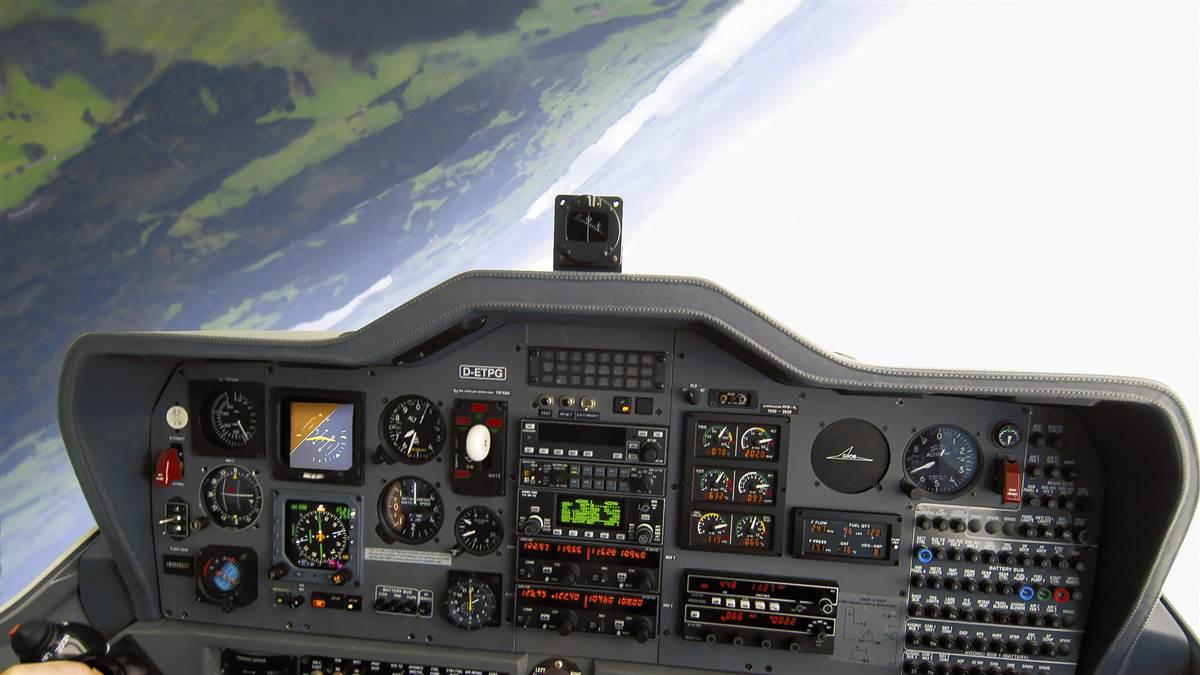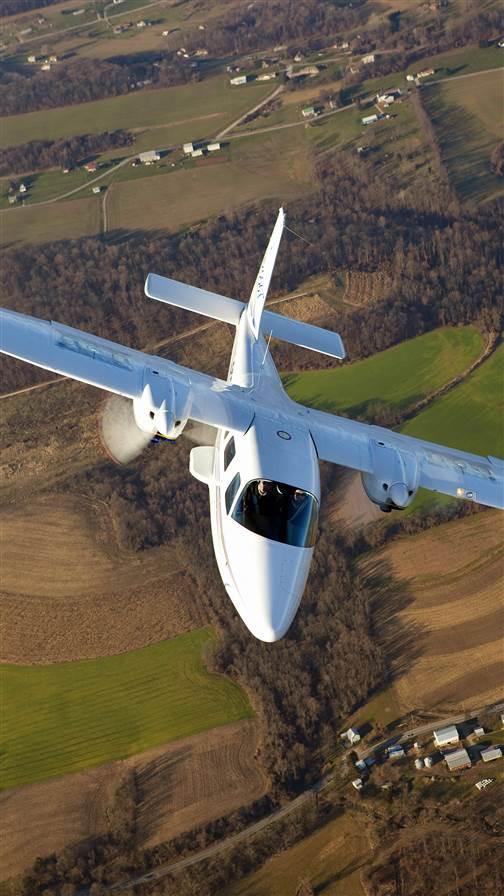Expand your Horizons
You won’t find these challenges in the private pilot curriculum

Spin training
 Catherine Cavagnaro operates Ace Aerobatic School in Sewanee, Tennessee, and routinely takes students for a spin in her Cessna 152 Aerobat named Wilbur to demonstrate the usefulness of spin training. Overflow crowds gather at the regional AOPA Fly-Ins to hear her ideas about developing skills from unusual-attitude training.
Catherine Cavagnaro operates Ace Aerobatic School in Sewanee, Tennessee, and routinely takes students for a spin in her Cessna 152 Aerobat named Wilbur to demonstrate the usefulness of spin training. Overflow crowds gather at the regional AOPA Fly-Ins to hear her ideas about developing skills from unusual-attitude training.
“We’ve all heard the stories concerning a stall that went out of control or an upset from gusty conditions,” said Cavagnaro. “To make things worse, ‘hangar talk’ is often filled with misinformation, so confusion and fear grow.” Cavagnaro said those tales don’t make for good learning environments for anyone, especially students or newly minted pilots. She said that in an emergency, “that fear might result in a delayed response or perhaps even the wrong one.”
In spin and unusual-attitude training, Cavagnaro replaces “irrational fear with appropriate respect.” It starts with ground school that covers how the airplane flies and the ways in which things can go wrong. Having reviewed the principles, dispelled common myths, and assembled a plan for the flight, “we take to the air and go over the edge in a calm, safe, controlled environment.” She said the purpose of the first flight is to instill confidence that “the airplane acts, even beyond the edge, in a predictable manner.” She emphasized that it was important to go over that edge in training to determine what it looks like to approach it, “what is beyond the edge,” and how to stay away from it in everyday flying.
Additionally, it’s important that unusual attitude and spin training occur on multiple flights because that’s when concepts really start to sink in. “Fear gives way to confidence, and the training even becomes fun.” She said instructors who demonstrate a spin for students only once might do more harm than good because it only serves to “exacerbate the students’ fear.”
“Spin and unusual attitude training is just one of myriad great ways to expand one’s envelope,” added Cavagnaro, who said she took spins and aerobatics “the first flight after receiving my private pilot certificate and was glad I did. The feedback I receive most often is that it helps with confidence in everyday flying.”
Mountain flying
Jason Miller is the host of aviation podcast The Finer Points, and the California-based pilot teaches a weekend mountain flying clinic. He maintains that mountain flying techniques help overall skills in several ways. First, more thorough flight planning helps pilots better analyze critical safety factors such as winds, visibility, altitudes, and aircraft performance before flight. Understanding how to coax optimum engine performance, in particular, boosts margins of safety in high density altitudes. Because high temperatures contribute to density altitude, this is also a key takeaway for flatlanders operating on a hot summer day.
Mountain flying exposes a pilot to unforgiving terrain and narrow margins. Miller says pilots should be keenly aware of the environment and always have a plan for escape. “There are definitely points where you don’t have an ‘out,’ even if it’s just for 15 or 20 seconds, so pilots should be aware of their surroundings,” Miller said. “Even if we can just get people to think about it a little differently and just get started on that journey to being a more conscientious planner, that would be a success.”
Spin training, mountain flying, experiencing real-world instrument conditions with an instrument-rated pilot, flying a different type of aircraft, and conquering flight-simulator exercises are all bound to boost skill and confidence levels above the minimums.Besides planning conservatively, Miller said that calling local pilots to find out about any special considerations “is probably a wise thing to do.” It can provide pilots with tools to help eliminate surprises involving local weather patterns, restricted flying areas, and runway considerations. If these items are addressed beforehand, it allows pilots to gain confidence venturing farther from their nest and boosts confidence.
In the San Francisco Bay area, for instance, Miller said it can be challenging to navigate the local airspace while fielding calls from rapid-fire controllers. Paying attention to airspace, he said, was critical as pilots “thread the needle” under the Class B shelf and around several Class D airports.
On a more basic level, Miller added that mountain flying also teaches pilots what to stash in an emergency survival pack should they encounter an off-airport situation.
Instrument conditions
While students and VFR-only pilots don’t plan to fly in instrument conditions, unintentionally encountering smoke, haze, or complete darkness has surprised more than one low-time pilot.
Jason Archer, a certificated flight instructor for Berkshire Aviation Enterprises in Great Barrington, Maine, said VFR students flying at night “will be struck by the change in, and sometimes the loss of, outside visual references compared to daytime operations.”
Archer said that a good way to train for night flight is to accompany a fellow student pilot and his instructor if the aircraft and conditions allow. He reasoned that it could help build familiarity with the aircraft’s lighting controls, local terrain, and the runway picture. He stressed that safe night flying requires pilots to rely on instruments, so it is vital to become familiar with all aspects of a typical six-pack or its digital equivalent.
Archer’s advice to tag along at night could also be applied to watching, listening, and learning from a properly rated pilot or instructor while accompanying the pilot on a flight in benign instrument conditions. Observing radio work, understanding approach plates, and learning the equipment required for an instrument approach may also deepen the knowledge for primary flight students. And once a pilot earns a certificate, going up and flying with a view-limiting device to keep instrument skills sharp doesn’t have to be limited to time with a flight instructor. Find a pilot you know and trust to act as safety pilot, and you can split the bill but both log the flight time.
Different aircraft
 Gaining experience in a taildragger or a floatplane adds another level of awareness and understanding for primary students getting a better handle on wind conditions and aircraft handling.
Gaining experience in a taildragger or a floatplane adds another level of awareness and understanding for primary students getting a better handle on wind conditions and aircraft handling.
Sean Brady, a seaplane instructor for Kenmore Air Harbor in Seattle, said floatplane flying is “all about learning to feel the aircraft” and the sight picture for takeoff and landing. He advocated not getting “too hung up on the numbers.” Instead, Brady teaches students to recognize the aircraft’s sweet spots and to keep a vigilant eye on the sight picture outside the windscreen. “Honestly, I haven’t looked at an airspeed indicator on landing in quite a while,” he said.
Seaplane pilots spend a lot of time analyzing visual clues about the wind and the waves from water streaks, waving flags, or rustling trees, which help determine the optimum direction for takeoffs and landings. That kind of wind comprehension translates into increased awareness for pilots flying wheeled aircraft, too.
Brady teaches in a Piper Super Cub on floats and said seaplane flying revolves around three things: “Number one, have a plan but be flexible. Second, understand the pitch to power relationship and know how each is affected. And third, observe the environment around us and know that it’s dynamic and always changing.”
Similarly, taildragger experience and learning effective ground-handling techniques can help nosewheel pilots become more adept as well.
Flight simulators
Instructors at the 2016 EAA AirVenture’s Pilot Proficiency Center in Oshkosh mentored VFR and IFR students through flight-simulator scenarios that ranged from modest to challenging. Although many pilots preferred simple simulator exercises, Brian Bishop steered most of them away from their comfort zone. He said that pilots should be realistically challenged in order to learn something worthwhile. Some students sweated more than others as they encountered unexpected flight emergencies or unfamiliar terrain.
One flatlander who requested a routine takeoff from a sea-level field was instead encouraged to try a simulated Idaho backcountry takeoff from Johnson Creek’s 3,400-foot-long grassy strip on a hot summer day. The real strip, elevation 4,993 feet, features amenities that make it a favorite among backcountry pilots and campers. The unsuspecting pilot, who was more at home on the East Coast, made several critical errors that resulted in a long takeoff roll as the Cessna 172 waddled into the air. Experiencing such a takeoff in the safe environment of a simulator offers several takeaways, including proper use of flaps on a high-density-altitude grass strip, efficient engine-leaning techniques, and terrain avoidance. Simply put, it was a lot easier, far less costly, and vastly safer to simply hit restart on Redbird’s full-motion simulator than it would have been to fly into Johnson Creek unaware.
Similar simulator training available at most flight schools where instructors can more economically quiz students on technique, radio-handling skills, and emergency procedures. In fact, students can prepare for long cross-country flights using a simulator to preview expected terrain, obstructions, and airport layout before flying the same route in an aircraft. While boosting confidence and awareness, simulator training may save time and money, which can be put to use for additional flight time.
With all these options available to flight students, training for maximum experience, rather than minimum standards, might be easier than thought.



